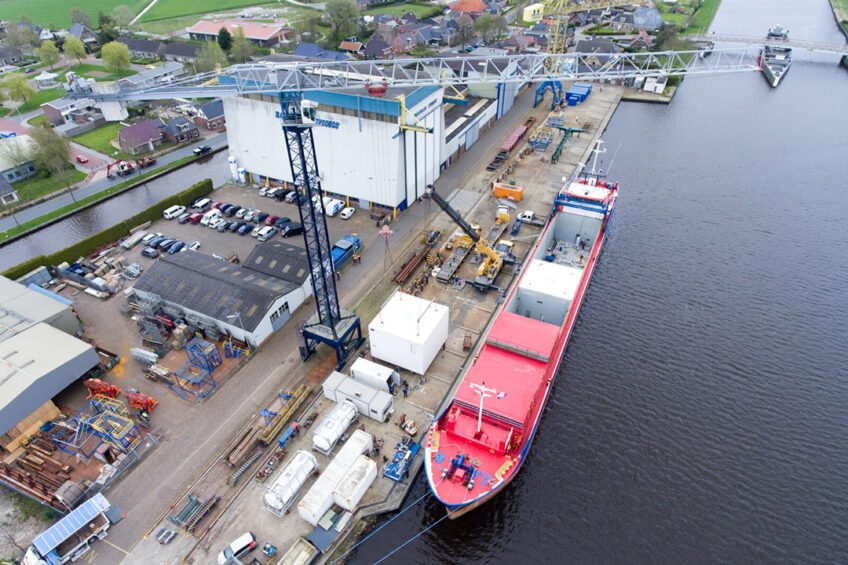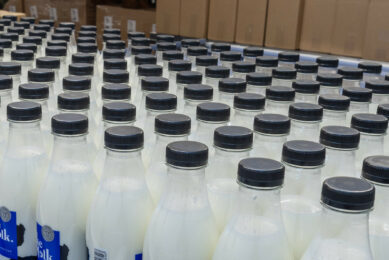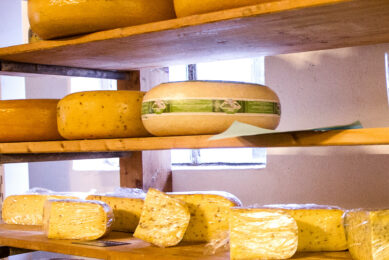New technology can reduce impact of milk production by 50%

A new and patented technology, developed by Dutch company MilkWays, changes the way we look at milk production and its sustainability.
We always looked at how we can produce more sustainably, not where we can produce more sustainably. MilkWays developed a safe way of transporting large volumes of fresh milk over long distances, giving non-traditional dairy countries access to high quality cow milk. Production is kept in the optimal region, with a low CO2 footprint and competitive price.

The MilkWays concept won a €5 million grant from the European Union, which allowed the technology to be developed and validated on an industrial scale. After extensive testing it is now available for worldwide deployment. Natural milk is high in protein, contains over 40 micro-nutrients and is an affordable and essential source of proteins for billions of people, especially vulnerable groups like children, pregnant women and elderly. The consumption per capita in Asia is currently just 65 litres – vs 300 litres in the EU or USA – but continues to grow. Every year the worldwide milk demand rises by 10-15 million tonnes. Mostly from non-traditional dairy countries, where milk production is inefficient due to lack of water, land and inadequate – or insufficient – feed.
Milk that doesn’t spoil
Trilobes – a sister company to MilkWays – is already a worldwide market leader in aseptic and temperature controlled supply chains, specifically for fresh fruit juices. Over the last 5 years MilkWays has developed this technology into a robust ‘cold chain’ solution. This technology has been modified for milk after extensive researching the micro-biology and in-depth behaviour. The technology is patented in 8 key geographic regions.
How do we do it? Large-scale testing, which involved shipping 250,000L of fresh milk from the Netherlands to Saudi Arabia, showed that 40-day old milk was suitable to produce 5 different dairy products locally. After extensive tests by expert and consumer panels the conclusion was that there was no deviation in taste and quality, compared to day-old fresh milk. A big surprise for worldwide dairy scientists.
Experts could not find any significant deviation in taste and quality in the 40+ day milk.
“We were quite convinced that we could safely transport fresh milk over large distances based on prior research,” says Frank van Buchem of MilkWays. “Experts of NIZO (a leading independent Dutch Dairy centre) and a major dairy company could not find any significant deviation in taste and quality in the 40+ day milk, nor in the range of products made from it. It tasted just like normal fresh dairy, that was quite a revelation.”

Using less water
Countries and regions such as China, South-East Asia and the Middle East struggle to meet this extra demand as they do not have the agricultural resources to increase their milk production. The production of 1 litre of milk requires 1,000 litre of water, mostly for growing feed. The land and water needed for feed face stiff competition from urbanisation and food production in many densely populated regions in the world. “Bring the cow back to its natural habitat, where milk can be produced more efficiently – at far lower cost – and with better animal wellness,” says Diederik Brasser, CEO of MilkWays.
Large CO2 reductions and cost savings
The solution is to produce milk in countries that have a suitable climate and abundant land and water for animal husbandry and feed production. New Zealand, Ireland, Scotland and Argentina are some of these countries. There is a considerable difference in the CO2 footprint per litre milk produced per region. In an in-depth FAO study (2010) the findings were that around 1.5 kg of CO2 per litre milk was produced in the EU and ANZ, whilst this was around 3.8 kg CO2 for South Asia.
The receiving countries can then focus on food production, increasing their self-sufficiency.
MilkWays aims is to transport 10 million tonnes of milk annually. This can save 10 billion tonnes of water from scarcity and can halve the CO2 footprint – including transport – if that milk would be produced in Asia. This delivers a CO2 reduction of 5 million tonnes. The overall impact of MilkWays could well be larger than Beyond Meat or Impossible Foods. The receiving countries can then focus on food production, increasing their self-sufficiency. The paradox is that the more milk a country with limited resources makes, the less self-sufficient in food it becomes. ‘Make food not feed’ is the MilkWays motto.
VIDEO: MilkWays’ successful fresh milk transport from the Netherlands to Saudi Arabia
More premium dairy products
A ‘fresh milk supply chain’ uses 60% less energy versus a ‘milk powder supply chain’ as the powdering process is very energy intensive. Far more than the energy needed to transport the larger liquid volume. Fresh milk is the base for wide portfolio of premium dairy products. It is a high-quality ingredient which can be processed into products such as yoghurts, cheese, and milk. This generates jobs and business opportunities and caters for a safe and steady supply of high-quality produce. A liquid fresh supply chain demands a long-term view and investment in infrastructure, thus the need for long term commitment and relationships. Supply contracts will typically cover 5-10 years at a fixed price, in what is normally a volatile world market. This secures a steady income for farmers. An added benefit is that buyers can use the country of origin (clean environment, pristine) as a strong marketing tool.
Strong global interest
MilkWays has received strong global interest and is discussing possibilities with leading dairy companies in China, South America and the Middle East; the potential volumes are huge. Our second MOU (Memorandum of Understanding) – involving a large Chinese dairy company – was signed in November and more will follow. The Australian minister of agriculture, Mr. Littleport, has openly endorsed the opportunities that the MilkWays technology offers for his country. MilkWays’ ambitions are high. Diederik Brasser: “We see an initial market opportunity for a volume of 2 billion litres of milk per year. Once we have the first lines operational, others will follow. They will have to.”
Authors: Diederik Brasser, CEO, and Frank van Buchem, commercial director of Milkways
Join 13,000+ subscribers
Subscribe to our newsletter to stay updated about all the need-to-know content in the dairy sector, two times a week.










